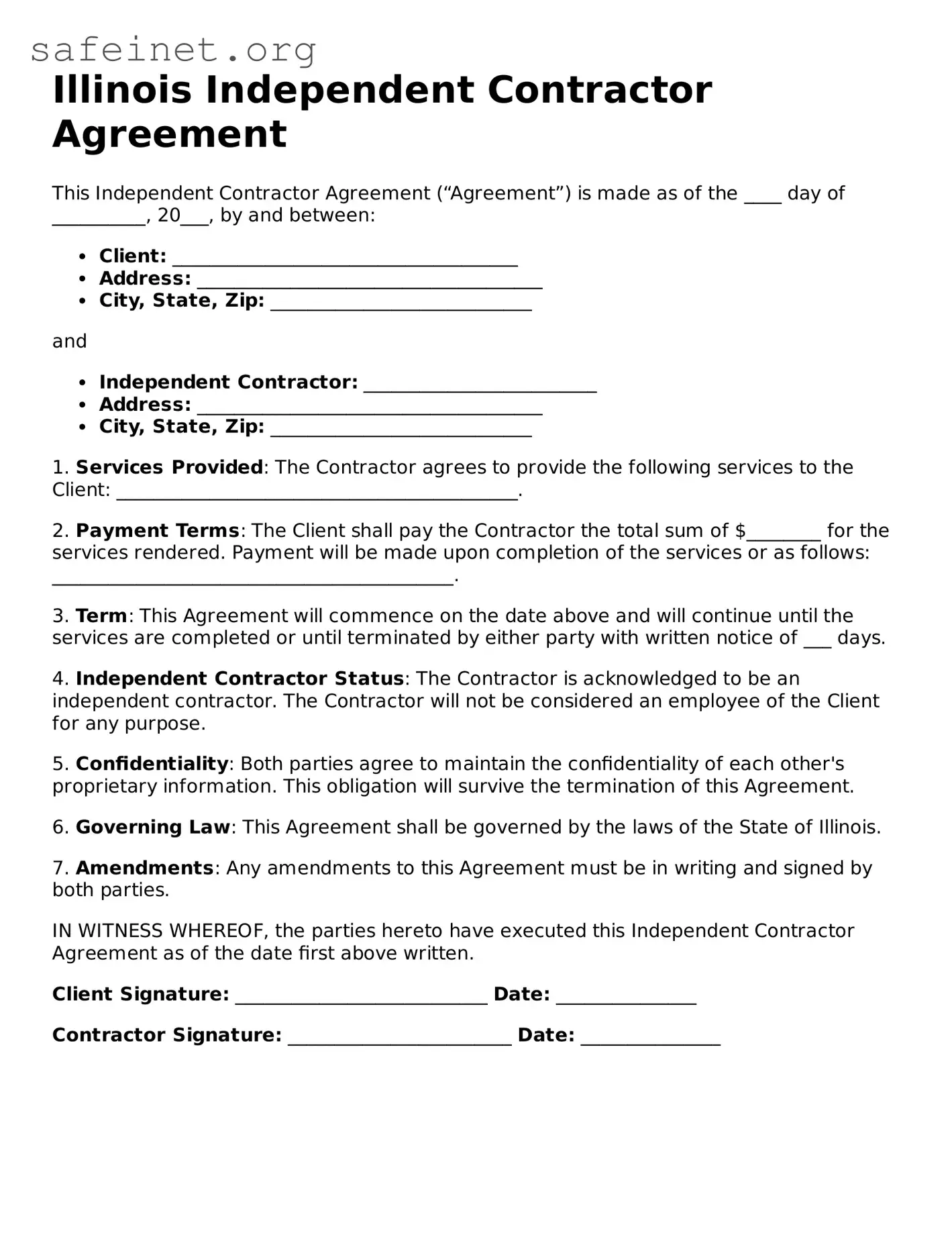The Illinois Independent Contractor Agreement is often compared to the Employment Agreement. Both documents outline the terms of a professional relationship, but they differ in key aspects. An Employment Agreement typically establishes an employer-employee relationship with associated benefits, obligations, and rights, whereas an Independent Contractor Agreement clarifies a more flexible relationship where the contractor operates independently. This distinction affects taxation, eligibility for benefits, and the overall control exerted by the employer.
Another similar document is the Non-Disclosure Agreement (NDA). Like the Illinois Independent Contractor Agreement, the NDA sets clear boundaries regarding confidentiality and the handling of sensitive information. Both documents are crucial in protecting intellectual property and trade secrets, ensuring that all parties involved maintain a level of trust and accountability. However, while the NDA focuses predominantly on information security, the Independent Contractor Agreement encompasses broader terms related to the engagement itself.
The Service Agreement is comparable in that it defines the terms of services provided by one party to another. This document, similar to the Independent Contractor Agreement, outlines the scope of work, payment terms, and deadlines. However, the Service Agreement often applies to various types of service providers, not just independent contractors, making it broader in scope while still addressing similar contractual elements.
Freelance Agreements share notable similarities with the Independent Contractor Agreement. Both documents are designed for informal work arrangements and stipulate payment terms, project deliverables, and timelines. Freelance Agreements may be less formal, occasionally omitting finer legal details, but they convey the same purpose: to outline expectations and protect both parties in a freelance relationship.
The Partnership Agreement can be likened to the Independent Contractor Agreement regarding the collaborative aspects of a business arrangement. While the former addresses the partnership structure, contributions, and profit-sharing details, the Independent Contractor Agreement caters to more transactional relationships without making parties partners. Both documents aim to clarify roles and responsibilities but operate under different legal frameworks.
A Consulting Agreement shares many elements with the Illinois Independent Contractor Agreement. Like the Independent Contractor Agreement, it addresses the nature of the relationship, compensation, and the specific consulting services provided. Both documents aim to create clarity between the service provider and the client, ensuring that expectations for the engagement are mutually understood.
Another similar document is the Commission Agreement. This type of agreement specifically outlines the compensation structure, often tied to sales or performance metrics. While the Illinois Independent Contractor Agreement establishes the overall work framework, the Commission Agreement is more focused on how the contractor's performance translates into earnings. Both agreements are critical for motivating and aligning the contractor’s efforts with the company’s goals.
The Work-for-Hire Agreement is another document that can be compared with the Independent Contractor Agreement. It details the terms under which a creator provides their services, similar to how an independent contractor might perform specific tasks. The key difference lies in ownership; a Work-for-Hire Agreement generally assigns rights of the created work to the hiring party, whereas an Independent Contractor Agreement may require negotiation regarding ownership of the work produced by the contractor.
Lastly, the License Agreement is akin to the Independent Contractor Agreement in that each creates frameworks for interaction in a professional setting. The License Agreement focuses on the permissions granted for use of intellectual property, whereas the Independent Contractor Agreement centers on the completion of projects or services. Both are vital in defining the rights and limitations of the respective parties involved.
